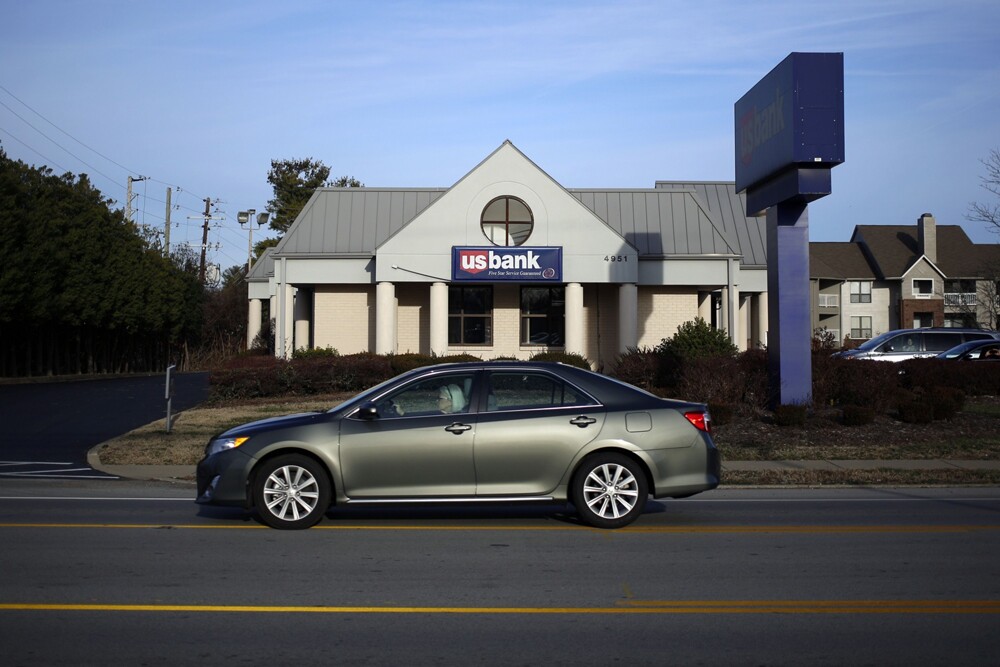U.S. bank shares, weighed down by fears over the Covid-19 pandemic, look good to GMO.
With price-to-book valuations close to lows during the global financial crisis, stronger U.S. banks represent an unusual opportunity for investors, GMO’s focused equity team said in a recent paper. “There is the potential for decent returns for bank investors without improvement in the current environment, and the potential for enormous returns if the rate of change in the economy remains positive.”
The pandemic has created an “extraordinary risk/return trade-off” for shares of high-quality banks in the U.S., as investors struggle to shake off memories of the financial crisis of 2008, according to GMO. They fear the Covid-19-induced recession will lead to significant loan losses at banks, and that a move by the Federal Reserve to mandate more regulatory capital to cushion such a blow would limit their growth and lead to dividend cuts.
“We can understand why many investors’ first urge is to mutter ‘here we go again’ and move on to other opportunities with less hair,” the firm’s focused equity team wrote. But, “this time around, for the higher quality banks at least, this is no rerun of the GFC.”
Bad news only turns “truly problematic” for long-term shareholders of banks when dilutive capital raising becomes necessary, as seen during the global financial crisis, according to their June paper. “We conclude that the risk of large-scale dilution, for high quality banks such as U.S. Bancorp and Wells Fargo at least, is remote and that the prices on offer at the time of writing are attractive.”
In the recent stock market rally, U.S. bank stocks have remained subdued by investors’ concerns they’ll run into “GFC-like trouble,” according the paper.
[II Deep Dive: GMO Says Stock Market Rally Has Gone Too Far]
But regulation put in place after the financial crisis has benefited banks in the economic disruption from the pandemic, according to GMO. They now have lower leverage and in most cases are “flush” with regulatory capital well beyond required levels, the authors said. Plus, the quality of the collateral banks hold in the event of client defaults now compares “very favorably” with the last cycle.
“While credit losses are looming, we believe that reduced bank leverage, reduced consumer leverage, and better collateral make the risk of dilution for the most conservative banks sufficiently remote,” they said.
GMO’s focused equity team also believes it’s unlikely the Fed will require higher capital cushions as that would limit bank lending in an election year – “an intolerable outcome.” And they said dividend cuts would have “almost no bearing on long-term returns.”
The firm’s equity team also played down investors’ concern over the potential for negative rates, which would pressure bank margins. “While it is mechanically true that tightening spreads are, all things equal, negative news, the connection between net interest margins and bank return on capital is only a loose one,” they said.
Banks can adjust the rates and fees they charge, as well as their expenses and funding sources, to address return on capital, according to the authors. “The market for banking in the U.S. is sufficiently competitive that we would expect the market to clear at an economic rate over time.”
Meanwhile, the government is “bending over backwards to keep households liquid,” they wrote, with checks to individuals as well as paycheck protection and forbearance programs. “If the price of buttressed borrower health is a couple of years of diminished spread while the system clears,” GMO equity team said they remain “confident shareholders at the prevailing stock prices for U.S. Bancorp and Wells Fargo.”







